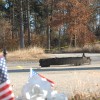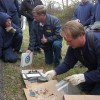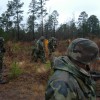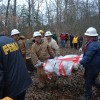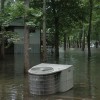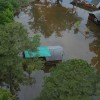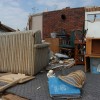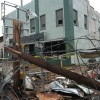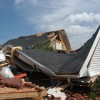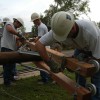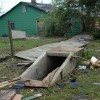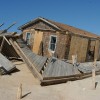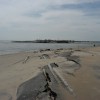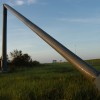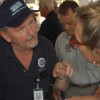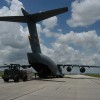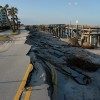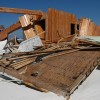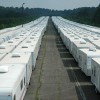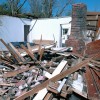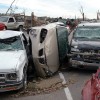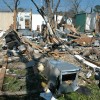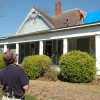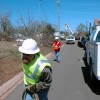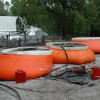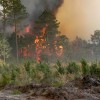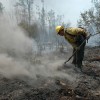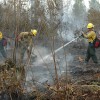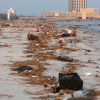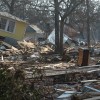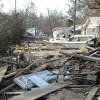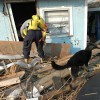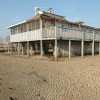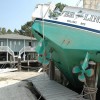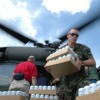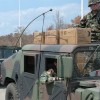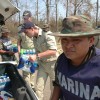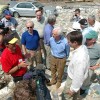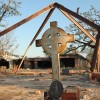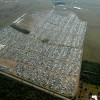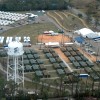| Tags: Alabama, Charley, Documentary, flood, Florida, Frances, Georgia, hurricane, Ivan, Jeanne, North Carolina, outer banks, Space Shuttle Columbia, Tennessee, Texas, tornado, U.S. Government, United States, wildfire | More: Disaster work
Hurricane Katrina
Hurricane Katrina made landfall in southern Louisiana near the Mississippi border on August 29, 2005 bringing with it a huge storm surge of water from the Gulf of Mexico flooding New Orleans when the levees failed. However, the storm surge was even worse on the Mississippi (east) side of Hurricane Katrina due to its counterclockwise rotation. The winds on the east side helped to push the waters of the Gulf significantly inland. For the communities along the coast, it was essentially like having all of its structures sitting in the ocean being struck by waves created by 100 mph (160 kph) winds for eight hours. As one can imagine in such a scenario, the damage was extensive.
For at least the first month after the disaster, September, 2005, everyone deployed by FEMA to Mississippi worked twelve (12) hours a day for seven (7) days a week. I don’t remember exactly but I’m sure we all were still working 10 hours a day, six days a week two months later. I do remember, however, that I worked an equivalent of 40, 40 hour weeks in only 28 weeks on the job. That was not, however, 28 weeks straight. FEMA requires its disaster workers to take time off every month or so to recharge.

